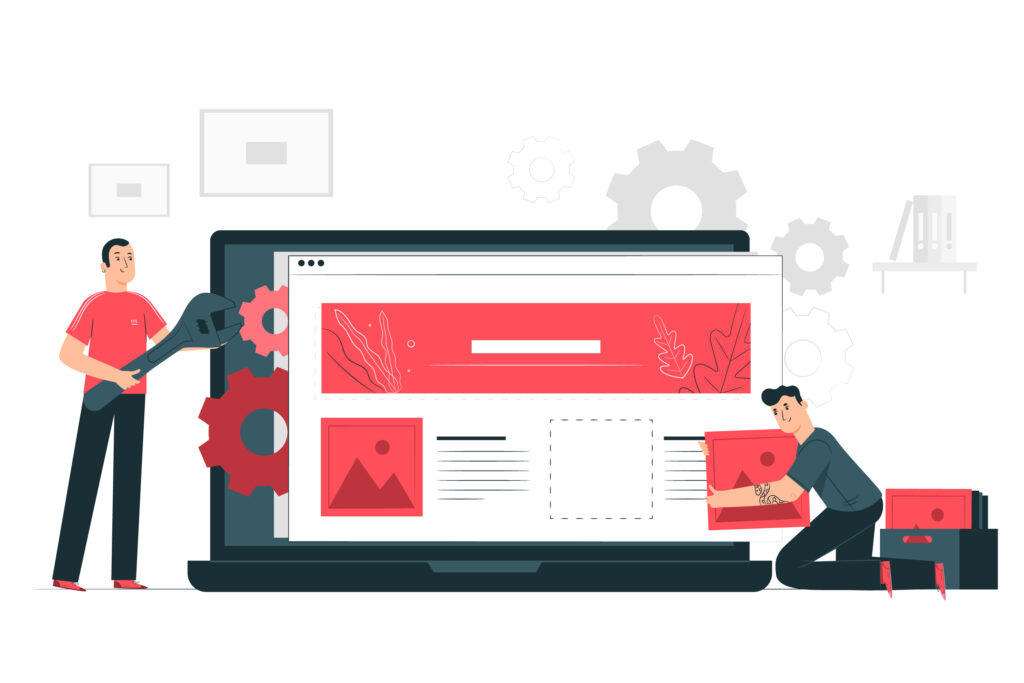In today’s digital age, having a website is no longer a luxury for small business owners; it’s a necessity. Your website serves as your digital storefront and is often the first point of contact for potential customers. However, simply having a website is not enough; it must be designed to convert visitors into customers. In this article, we will explore the essential elements of designing a website that converts and provides valuable tips for small business owners looking to create an effective online presence.
The Importance of Website Conversion
Website conversion is the process of turning website visitors into paying customers, subscribers, or leads. It’s the ultimate goal of your online presence. A well-optimized website can significantly impact your business’s success, from generating revenue to building a loyal customer base.
Small business owners can’t afford to overlook the significance of conversion. It directly affects your bottom line, and every visitor who doesn’t convert represents a missed opportunity. Whether you’re selling products, offering services, or looking to capture leads, here are some key reasons why website conversion is critical:
- Boost Revenue: Converting website visitors into customers means more sales and increased revenue for your business.
- Cost-Efficient Marketing: Converting existing website traffic is often more cost-effective than acquiring new visitors through advertising.
- Building Customer Loyalty: A well-converted visitor is more likely to become a loyal customer, increasing the lifetime value of that customer.
- Measuring Success: Conversion metrics provide valuable insights into your website’s performance, allowing you to make data-driven decisions for optimization.
- Competitive Advantage: A well-optimized website can give you a competitive edge in the online marketplace.
Tips for Designing a Website That Converts
Now that we understand the importance of website conversion, let’s delve into the essential tips for small business owners to design a website that converts effectively:
1. Clearly Define Your Goals
Before diving into the design process, it’s crucial to clearly define your website’s goals. What do you want visitors to do when they land on your website? Are you looking to sell products, generate leads, or simply provide information?
Your goals will shape the entire design and content of your website. Once you’ve identified your objectives, you can create a focused and persuasive user experience.
2. Know Your Audience
Understanding your target audience is paramount in designing a website that converts. Consider the demographics, needs, and preferences of your potential customers. What problems are they looking to solve, and how can your website address those issues?
Tailor your website’s content, design, and messaging to resonate with your specific audience. The more personalized and relevant your website is to visitors, the higher the chances of conversion.
3. Create a User-Friendly Design
A cluttered, confusing, or outdated design can deter visitors from engaging with your website. Ensure your website has a clean, modern, and user-friendly design. Here are some design principles to consider:
- Mobile Responsiveness: With the increasing use of smartphones, your website must be mobile-responsive to provide a seamless experience on all devices.
- Intuitive Navigation: Make it easy for users to find what they’re looking for with clear navigation menus and a logical site structure.
- Readable Typography: Choose legible fonts and font sizes to ensure that your content is easily readable.
- High-Quality Imagery: Use high-quality images and visuals that reflect your brand and engage visitors.
- Consistent Branding: Maintain consistent branding elements, such as colors, logos, and fonts, to create a cohesive and professional look.
4. Craft Compelling Content
Quality content is a key driver of website conversion. Your content should be informative, engaging, and persuasive. Some important content considerations include:
- Clear Value Proposition: Clearly communicate the value you provide and why visitors should choose your products or services.
- Compelling Headlines: Use attention-grabbing headlines to draw visitors into your content.
- Benefits Over Features: Emphasize the benefits of your offerings rather than just listing their features.
- Use of Calls to Action (CTAs): Include well-designed CTAs that guide users toward your conversion goals. For example, “Buy Now,” “Get Started,” or “Subscribe.”
- Testimonials and Social Proof: Showcase customer reviews, testimonials, or case studies to build trust with your audience.
- Blog and Resources: Create a blog or resource section to demonstrate your expertise and provide additional value to visitors.
5. Optimize Page Load Speed
Website speed is a critical factor in conversion. Visitors are more likely to bounce from a slow-loading site, leading to lost opportunities. To optimize page load speed:
- Compress images to reduce file sizes.
- Minimize HTTP requests.
- Use content delivery networks (CDNs) to distribute content globally.
- Enable browser caching.
- Use a reliable hosting provider.
Page load speed not only improves user experience but also positively affects your search engine rankings.
6. Implement Strong SEO Practices
Search engine optimization (SEO) is essential for increasing your website’s visibility in search engines. When your site ranks higher, you’re more likely to attract organic traffic, which can lead to higher conversion rates. Consider the following SEO strategies:
- Conduct keyword research to identify relevant terms.
- Optimize on-page elements such as title tags, meta descriptions, and headers.
- Create high-quality, shareable content.
- Build high-quality backlinks to improve your site’s authority.
- Monitor and adjust your SEO strategies regularly.
7. A/B Testing
A/B testing, also known as split testing, is a powerful technique for optimizing your website for conversion. It involves comparing two versions of a webpage to determine which one performs better in terms of conversion rates.
With A/B testing, you can experiment with different elements of your website, such as headlines, CTAs, images, and layout. By measuring the results of these tests, you can make data-driven decisions to improve conversion rates continuously.
8. Optimize for Local SEO
If your small business relies on local customers, it’s essential to optimize your website for local SEO. Here’s how you can do that:
- Claim and optimize your Google My Business listing.
- Use local keywords in your content.
- Encourage customer reviews on platforms like Google and Yelp.
- Include your location and contact information on your website.
- Create location-specific landing pages if you serve multiple areas.
Local SEO optimization can help you appear in local search results and attract nearby customers.
9. Secure Your Website
Online security is a critical concern for both businesses and consumers. Implementing SSL (Secure Sockets Layer) encryption on your website not only protects user data but also builds trust. Many users look for the padlock symbol in their browser’s address bar to ensure the site is secure before making a purchase or sharing personal information.
10. Integrate Social Media
Social media is a powerful tool for driving traffic to your website and building brand awareness. Integrate social sharing buttons on your website to encourage visitors to share your content and products with their networks.
Furthermore, maintain an active social media presence to engage with your audience and promote your website. Sharing user-generated content, running contests, and responding to comments can all help in building a loyal online community.
11. Streamline the Checkout Process
If you’re an e-commerce business, one of the most critical aspects of conversion is the checkout process. A lengthy or complicated checkout process can lead to cart abandonment. Simplify the process as much as possible, offering guest checkout options, multiple payment methods, and clear instructions.
Consider implementing a progress bar to show customers how far they are in the checkout process and provide reassurance about the security of their payment information.
12. Provide Exceptional Customer Support
Customer support is a valuable tool for boosting website conversion. Make it easy for visitors to get in touch with you through contact forms, chat support, or a dedicated customer support page.
Quick response times and friendly, helpful interactions can make a positive impression on potential customers. Additionally, offer a comprehensive FAQ section to address common questions and concerns.
13. Analyze and Optimize
Finally, the work doesn’t end with the launch of your website. Regularly analyze your website’s performance using tools like Google Analytics. Pay attention to key metrics, such as conversion rate, bounce rate, and user engagement.
Use this data to make informed decisions about what’s working and what needs improvement. Continuously test and optimize your website to adapt to changing trends and user behavior.
Designing a website that converts is not just about aesthetics but about creating a user experience that guides visitors toward your desired actions. By following the tips outlined in this article, small business owners can significantly improve their chances of success in the competitive online landscape.
Remember to set clear goals, understand your audience, create user-friendly designs, craft compelling content, optimize for speed and SEO, conduct A/B testing, secure your website, integrate social media, streamline the checkout process, provide exceptional customer support, and continuously analyze and optimize your website. With dedication and the right strategies, your website can become a powerful tool for achieving your business goals and driving conversion.
The author generated this text in part with GPT-3, OpenAI’s large-scale language-generation model. Upon generating draft language, the author reviewed, edited, and revised the language to their own liking and takes ultimate responsibility for the content of this publication.





